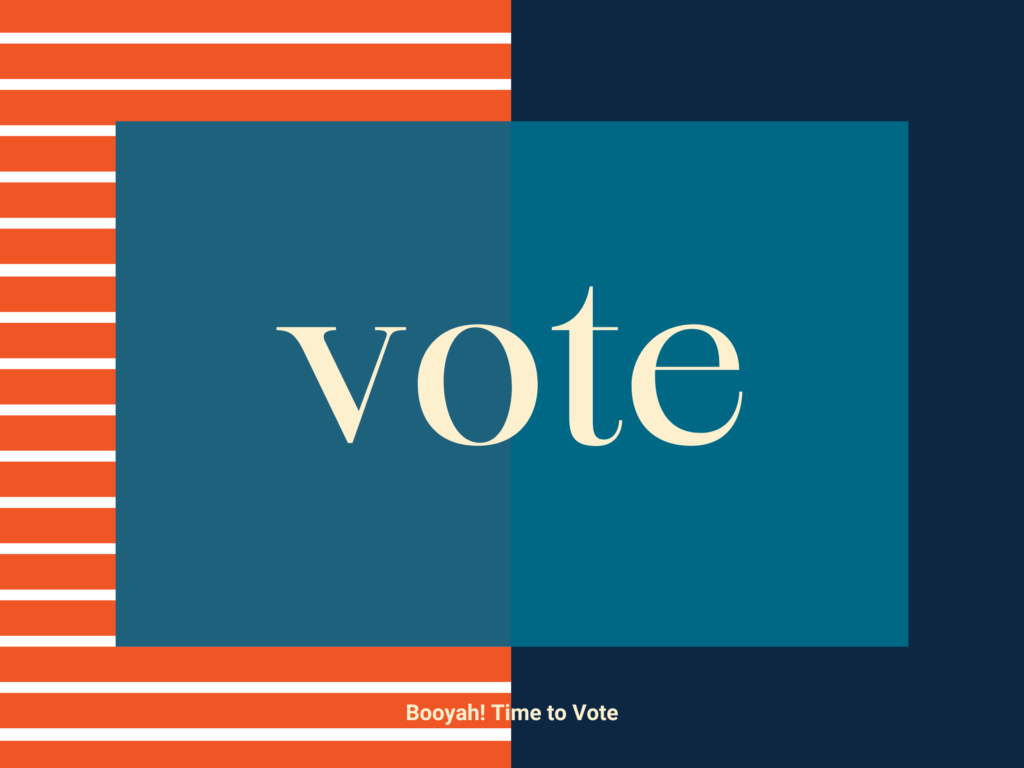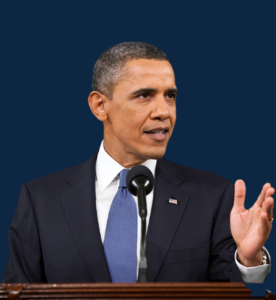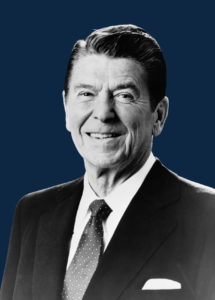Time to Vote: What Political Marketing Can Teach Us About Our Own Campaigns
Whatever your political leaning, we can probably all agree that politicians have a unique job. They’re put on a stage in front of some of the largest audiences in the world and have to promote themselves and their values. They also have to represent a larger party, and speak to people that they know may actively disagree with them. How do they approach these situations without being overly salesy or appearing disingenuous? For one, they have dedicated marketing strategists who consciously decide everything they do and say, from the language that politicians use, down to how they dress and how they stand.
This year, politicians will spend a staggering $9.6 billion on advertising across TV and social media. With so many eyes and ears on politicians at all times, candidates must be extra careful to tailor their content to demographics, closely track engagement and sentiment around that content, and ultimately push a call to action to vote. Sounds familiar, right?
Politics is a business, and when election season is in full swing, there’s a lot that companies can take away from politicians’ marketing efforts. With midterm elections around the corner, it’s time to vote and take a little inspiration from the political marketing that shapes the nation. Grab a pen, cast your ballot, and open your Google Analytics dashboard: we’re talking politics and business campaigns.

What We’ve Learned From Political Marketing So Far
There have been a few apparent “do’s” and “don’ts” in political marketing that are transferable to business. The first is to keep it classy. Don’t make fun of serious issues, and don’t project concepts that could be offensive or alarming. Use inclusive language, try to represent a broad spectrum of people, and talk in a way that is natural and accessible. For example, just because you’re trying to appeal to a younger generation doesn’t mean your campaign should force the use of trendy slang (“that’s so fire”).
Next, we’ve learned that you absolutely have to know what you’re talking about. You can’t launch a campaign with a particular angle and not expect to be called out if you haven’t done your homework. How many times have you seen politicians stutter through an answer because they simply don’t understand the subject?
In business, where one Tweet could dismantle your entire campaign, it’s better to cover all grounds in your marketing research and be confident that your campaign is wholly prepared and articulate. Not doing so could result in a situation like Pepsi’s notorious ad, in which Kendall Jenner settles a protest by giving a police officer a can of soda. Inappropriate, bizarre, and met with a wave of complaints, the ad was quickly pulled after its initial release.
We’ve additionally discovered that over-editing does you no favors. Political ads that have been jammed full of special effects are harder to decipher and typically look like out-of-touch politicians trying to be cool. Instead of heading straight to Adobe Suite to make an ad pop, politicians that have kept a basic style have seen way more traction with audiences.
What Can We Still Learn From Political Marketing?
As digital spaces become more popular and more complex, companies should keep atop political marketing to ensure that they sense-check what does and doesn’t work. Misinformation is a growing problem and brands are being held to higher standards when it comes to fact-checking and how they lead audiences to a conclusion.
Likewise, political marketing will likely remain a good litmus test for cultural sensitivity – so companies should be watching with a conscious eye around terminology and representation. And, because political campaigns tend to have large budgets, they have greater scope to innovate with their ads while still keeping content realistic and progressive. Businesses can therefore use political marketing as a guide to producing ads that are forward-thinking without becoming unrelatable.
Examples of Effective Political Marketing
Storytelling is at the heart of political marketing, so a powerful ad needs to have a strong narrative, a clear focus, and be instantly memorable. Below, we’ve listed a few notable political marketing campaigns.
Dwight Eisenhower, “Ike For President”

Eisenhower’s 1952 campaign ran a short animated clip with a catchy song. Repeating the phrase “Ike for President” and the lyrics “You like Ike, I like Ike, everybody likes Ike,” the ad was impactful because of its simplicity. In business, the same principle applies. You don’t need an over-produced soundtrack to strike a chord with an audience – a no-frills approach shows customers that your brand is transparent and down-to-earth.
This doesn’t just apply to audio elements. Simple text and a simple aesthetic will help you get your point across more quickly and resonate more deeply with diverse groups from around the country.
Barack Obama, “Yes, We Can”

This emotive video from Obama is filmed in black and white and shows Obama reading from the founding documents in a speech, alongside an impressive selection of celebrities saying and singing the same words. The repeated phrase “Yes, we can” emphasizes positivity, as the president details what is possible with his administration, versus the typical smear campaign politicians invoke.
For company marketing, it’s nearly always better to double down on what value you offer customers, rather than taking a jab at your competitor. Regardless of the industry you’re in, people generally respond better to constructive messaging than ads that criticize others.
Ronald Reagan, “It’s Morning Again in America”

Reagan’s 1984 political TV campaign opened with the line “It’s morning again in America” and showed slow shots of cities coming to life, people going to work, and ordinary life events taking place. Meanwhile, the voiceover listed stats about how employment and interest rates had improved in the past four years. The video was well-received due to its portrayal of calm daily life.
In the business space, you can mirror Reagan’s ad strategy by highlighting your brand’s achievements and displaying those successes in real-life scenarios. Don’t be tempted to exaggerate or use hyperboles as you do – keep the language concise, and the visuals representing everyday people. People love relatable.
How Can We Use Political Marketing In Our Own Strategies?
Brands can take a page from the political marketing book, and it’s clear why. Politicians have to mindfully curate campaigns that accurately depict them and their goals, and instill trust across an entire nation.
And while some brands want to stay clear of political issues in their narratives, there’s no denying that politicians know how to communicate with the masses. As a company, it’s worthwhile to watch an array of political marketing videos (many are available on YouTube) and dig into the comments section and news articles from that time to see what struck a chord with viewers.
Be sure to note what was ahead of its time when the video was released, and what common threads politicians use throughout their content too (e.g., a jingle, color scheme, format). Compare and contrast how parties have developed their campaigns over time – have they shifted toward a different angle? If yes, consider why and how well they’ve transitioned without affecting voter confidence.
It’ll likely take some time and effort, but delving into the political marketing landscape can give you a structural foundation to construct your own business campaigns. Plus, you’ll have a more in-depth understanding of the political realm, which will come in handy when publishing content that you want to genuinely matter to people.

